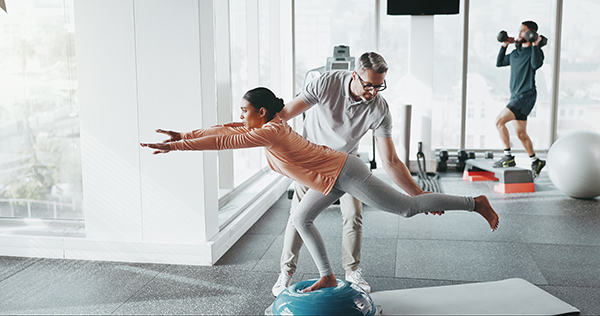
Hip injuries can derail an athlete’s career and sideline even the most elite performers. Whether you're sprinting, cutting, pivoting, or landing, the hip joint plays a central role in performance. The good news is that most hip injuries are preventable with a strategic focus on three essential elements: balance, mobility, and strength. Here’s how targeted training can help protect your hips and keep you performing at your best.
Balance: The Foundation of Injury Prevention
Maintaining proper balance isn’t just for gymnasts or dancers—it’s critical for athletes across all sports. Good balance reduces the risk of awkward movements that can strain the hip joint and surrounding muscles. Incorporating balance exercises like single-leg stands, stability ball work, and proprioception drills can help athletes stay centered and aligned, even under pressure. A well-balanced athlete reacts more quickly and moves more efficiently, reducing stress on the hips.
Mobility: Keep the Hips Moving Freely
Limited hip mobility is a silent saboteur. When hips are tight or restricted, the body compensates—often by overloading the lower back, knees, or other muscle groups. Over time, this imbalance can lead to overuse injuries or acute trauma. Stretching the hip flexors, glutes, and surrounding muscles, along with targeted mobility exercises like dynamic lunges and hip circles, keeps the joint fluid and functional. Don’t forget foam rolling and joint mobilization techniques to further enhance hip movement.
Strength: Build Resilience from the Core Out
Strong hips are injury-resistant hips. Strengthening the muscles around the hip—especially the glutes, adductors, and hip rotators—creates a supportive framework that absorbs impact and distributes forces evenly. Resistance training exercises such as hip thrusts, squats, and lateral band walks improve hip integrity and power. Additionally, a strong core supports better posture and reduces compensatory movement patterns that stress the hips.
Integrating into Training
Preventing hip injuries isn’t about adding more hours in the gym—it’s about training smarter. Warm-ups should include mobility and balance work, while strength training should target both large and stabilizing muscles. Regular screening by sports medicine specialists can help identify early signs of imbalance or weakness before they develop into injuries.
Protect Your Hips, Protect Your Game
Athletes thrive on movement, but movement must be controlled, fluid, and strong. Prioritizing balance, mobility, and strength is not only essential for injury prevention but also critical for peak performance.
If you’re an athlete dealing with hip pain or looking to build a personalized prevention plan, contact the American Hip Institute to schedule a consultation with our hip experts.
AUTHOR: Mark F. Schinsky, MD, is a board-certified, fellowship-trained orthopedic surgeon specializing in adult reconstructive surgery, with a focus on hip and knee replacement. He has extensive expertise in minimally invasive techniques, complex primary procedures, and revision total joint replacements, using the latest surgical technologies and biologics to improve outcomes and recovery.
AUTHOR: Benjamin D. Kuhns, MD, MS, is a board-certified, fellowship-trained orthopedic surgeon specializing in the comprehensive management of adult hip pain. Dr. Kuhns offers a full spectrum of care, from non-operative treatments—including hip-specific physical therapy, medication management, and targeted injections—to advanced surgical solutions. His surgical expertise includes complex primary and revision hip arthroscopy, open hip preservation procedures such as periacetabular and proximal femoral osteotomies, and robotic-assisted anterior total hip replacement.

